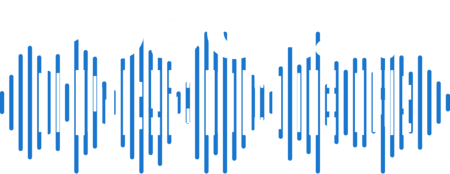Podcast: Play in new window | Download (Duration: 24:22 — 33.5MB) | Embed
 This was Todd’s last episode of Podcast Insider, recorded on September 4th. Todd poured his heart into Blubrry’s show and into serving the podcasting community, and we’re honored to share his final conversation here. We’ll be returning to the podcast most likely around mid-October. In the meantime, we want to thank all of our listeners for standing with us as we grieve, reflect, and decide the best way to move forward with the show.
This was Todd’s last episode of Podcast Insider, recorded on September 4th. Todd poured his heart into Blubrry’s show and into serving the podcasting community, and we’re honored to share his final conversation here. We’ll be returning to the podcast most likely around mid-October. In the meantime, we want to thank all of our listeners for standing with us as we grieve, reflect, and decide the best way to move forward with the show.
Today’s Hosts: Todd Cochrane and MacKenzie Bennett
Planning Podcast Seasons
Some podcasters, like Todd, prefer not to use seasons because they’ve seen how it can disrupt listener habits—especially with shows tied to weekly news or current events. But for many podcasters, seasons can provide structure, creative focus, and built-in opportunities to reset or experiment without losing momentum. The key is knowing your audience and your show’s format, then deciding whether a seasonal approach will help you deliver content more consistently and sustainably.
✅ Start With the Big Picture
Before you dive into episode ideas, take a step back and ask:
- What is the theme or goal of this season?
- Who is this season for—and what do they want to hear?
- How many episodes can you realistically commit to?
Seasons don’t have to be 10 or 12 episodes—some are just 3 to 6. The key is to choose a structure you can stick with and that your audience will appreciate.
💡 Blubrry helps: Use your Blubrry stats to look back at past performance. What topics resonated most? What formats kept listeners around? Let your data guide your next season.
✅ Brainstorm, Then Batch Plan
Once you’ve locked in your season theme or focus, start brainstorming topics. Don’t overthink it—jot down everything that fits.
Then organize your ideas by:
- Episode title or working title
- Main talking points or guest ideas
- Any time-sensitive topics that should go earlier in the season
Batch planning gives you a head start, so you’re not scrambling week to week.
💡 Blubrry helps: With built-in episode drafting and scheduling tools, your podcast dashboard makes it easy to prep ahead and stay consistent.
✅ Book Guests (or Solo Prep) Early
If your season includes interviews, start reaching out to guests as early as possible. Provide a general timeline and ask about their availability over the next few weeks.
If you’re doing a solo season, block out time to record multiple episodes at once. This is key for staying on track.
💡 Blubrry helps: Need to find guests? Use Guest Match Pro, Blubrry’s creator connection platform, to match with qualified guests and message them directly.
✅ Set a Publishing Schedule—and Stick to It
Decide when your season will launch, how often episodes will drop (weekly, biweekly, etc.), and when it will wrap up.
Then share that schedule with your audience. This builds trust and anticipation—and it gives you clear milestones to work toward.
💡 Blubrry helps: Auto-publishing tools let you schedule your season in advance so episodes go live even when you’re not at your desk.
✅ Don’t Forget Promo & Wrap-Up Content
A season isn’t just the episodes—it’s also the buzz you build around it.
Plan content like:
- A trailer or teaser for the season
- Social media graphics or audiograms
- A wrap-up episode or blog post summarizing key takeaways
💡 Blubrry helps: Tools like Pod2Vid and your free podcast website help you create and share that extra content without starting from scratch.
Thanks for listening to Podcast Insider, you can subscribe to new episodes out every Monday.
The best place for support with any Blubrry product or service is our ticket system. Tickets give the whole team access vs. direct emails or calls. General podcasting discussions and more can be shared on the Blubrry Podcasting Facebook group.
Fill out our listener survey at surveys.blubrry.com/podcastinsider
Hosting customers can schedule a one-on-one tech checkup with Mike at mike@blubrry.com
Stay tuned for more episodes and visit our website for the latest updates and resources.





